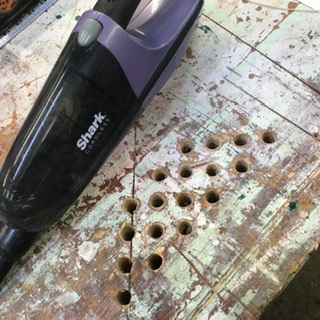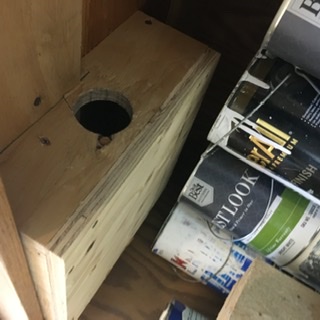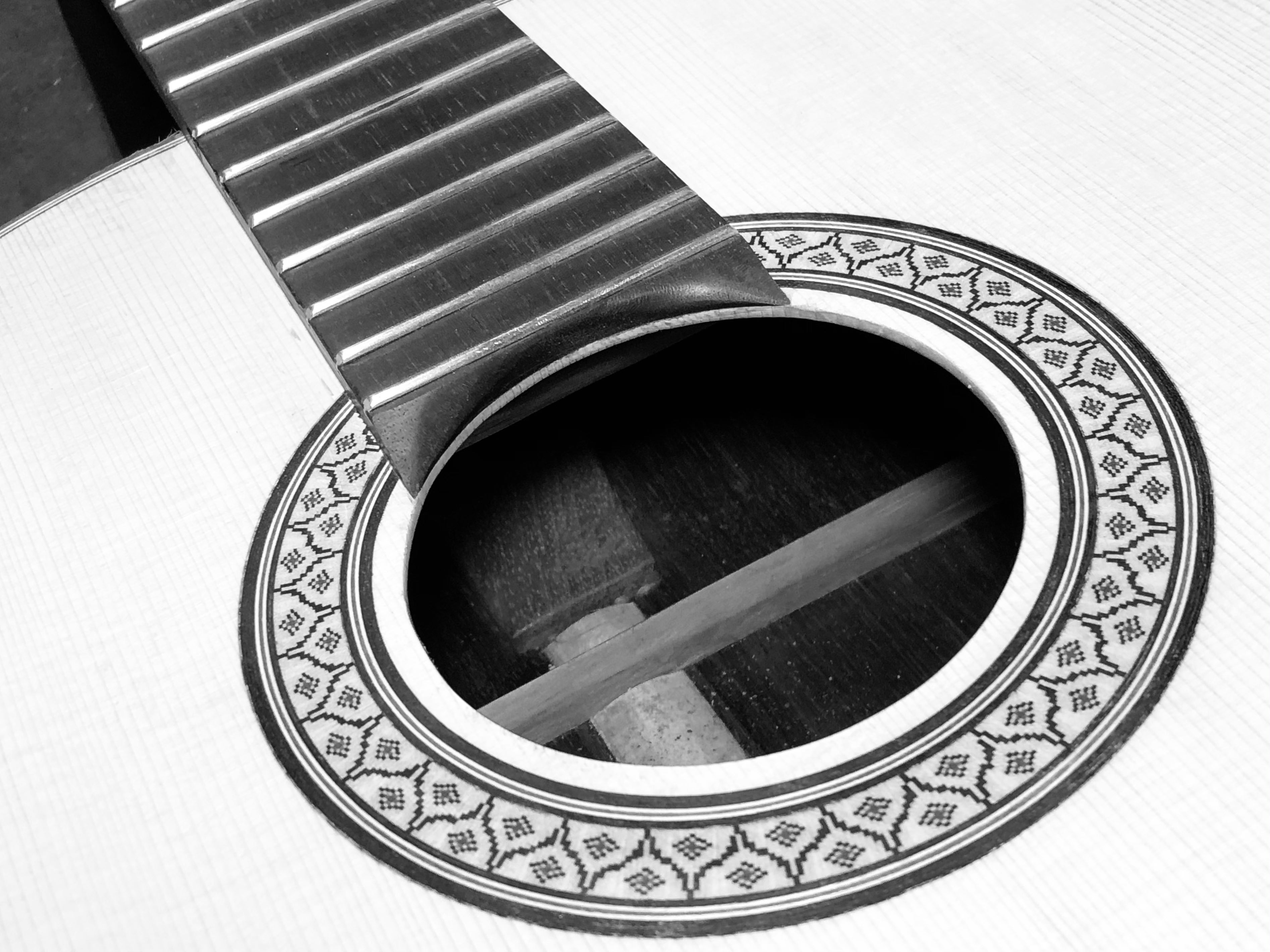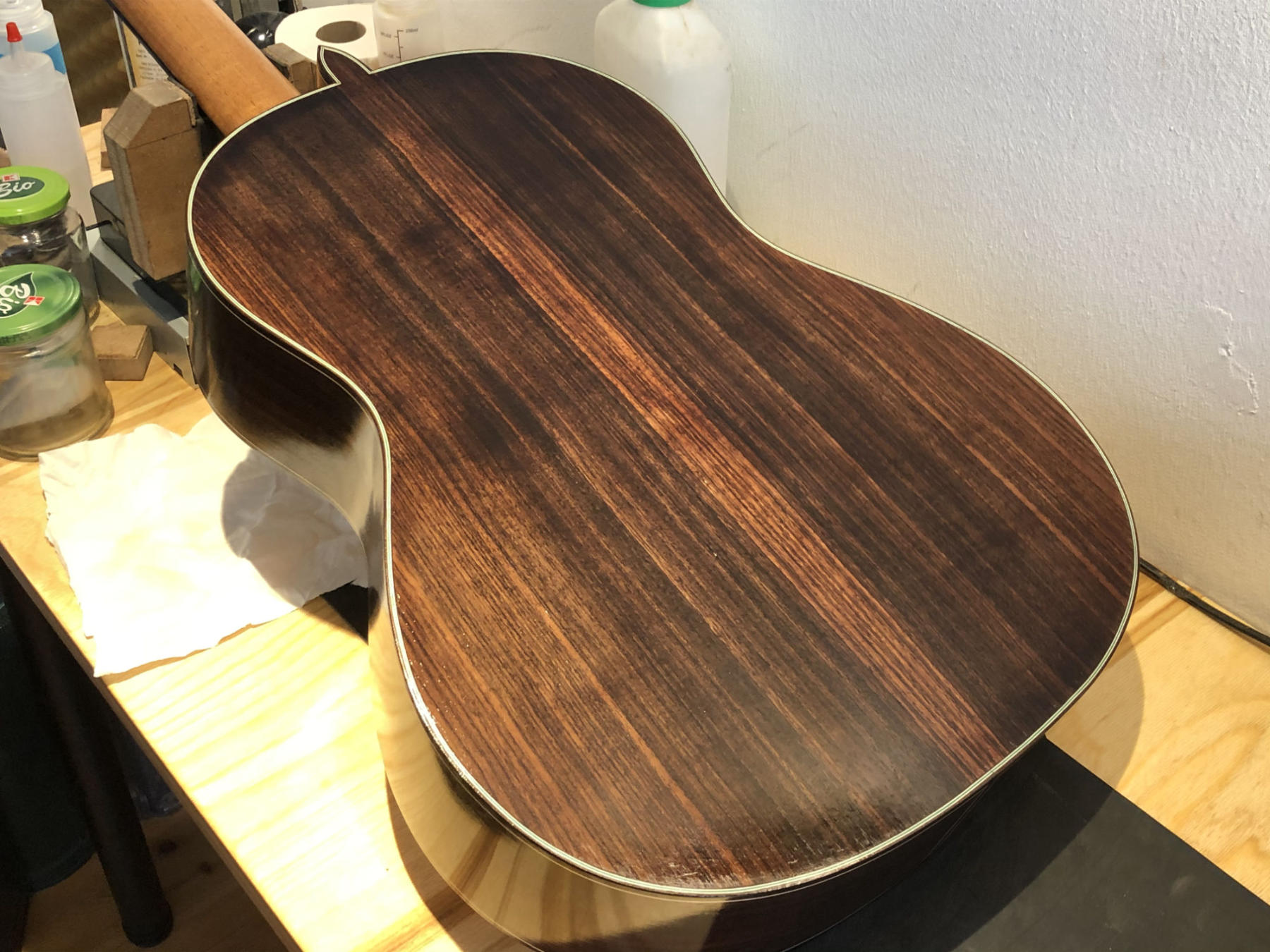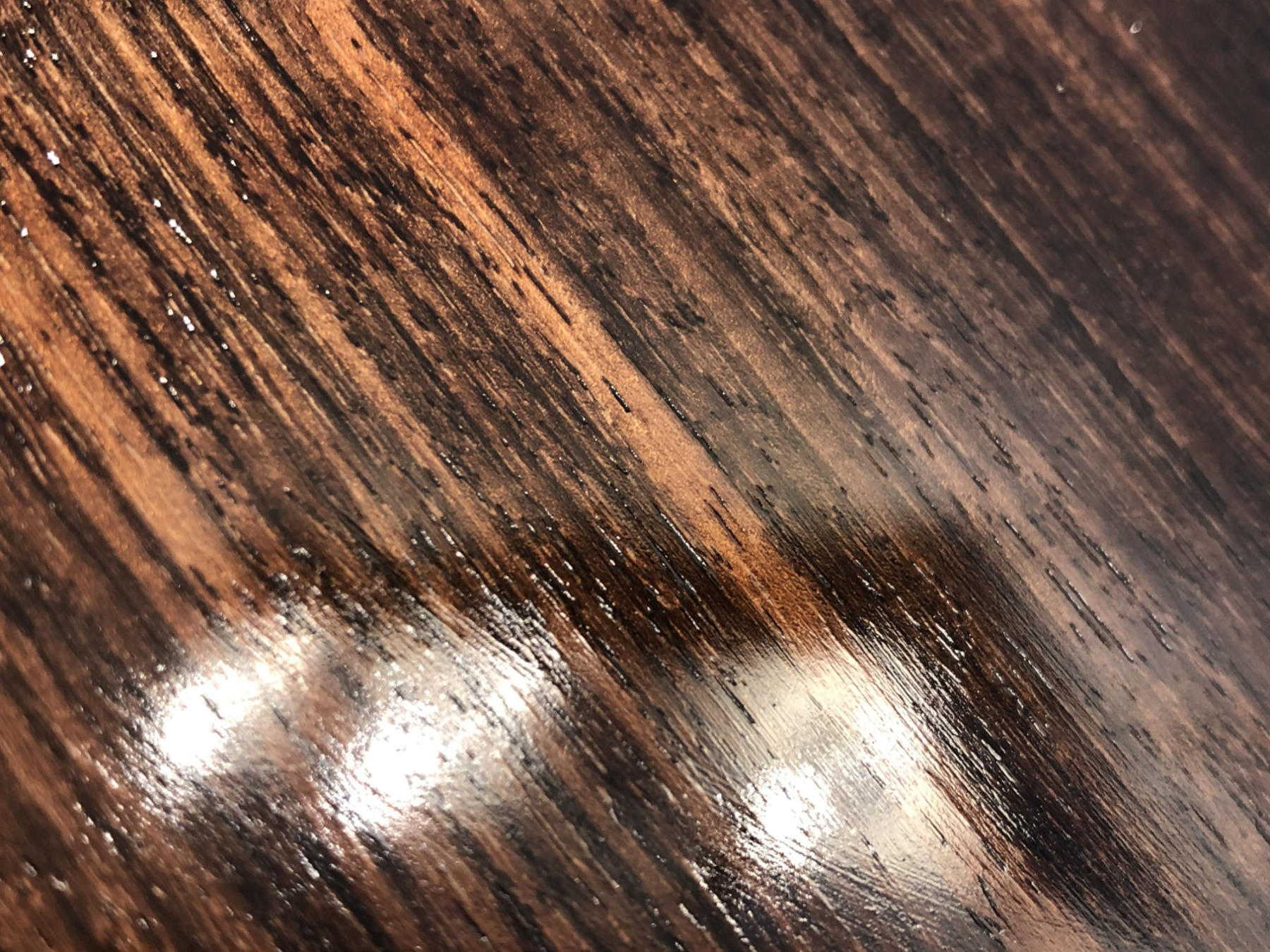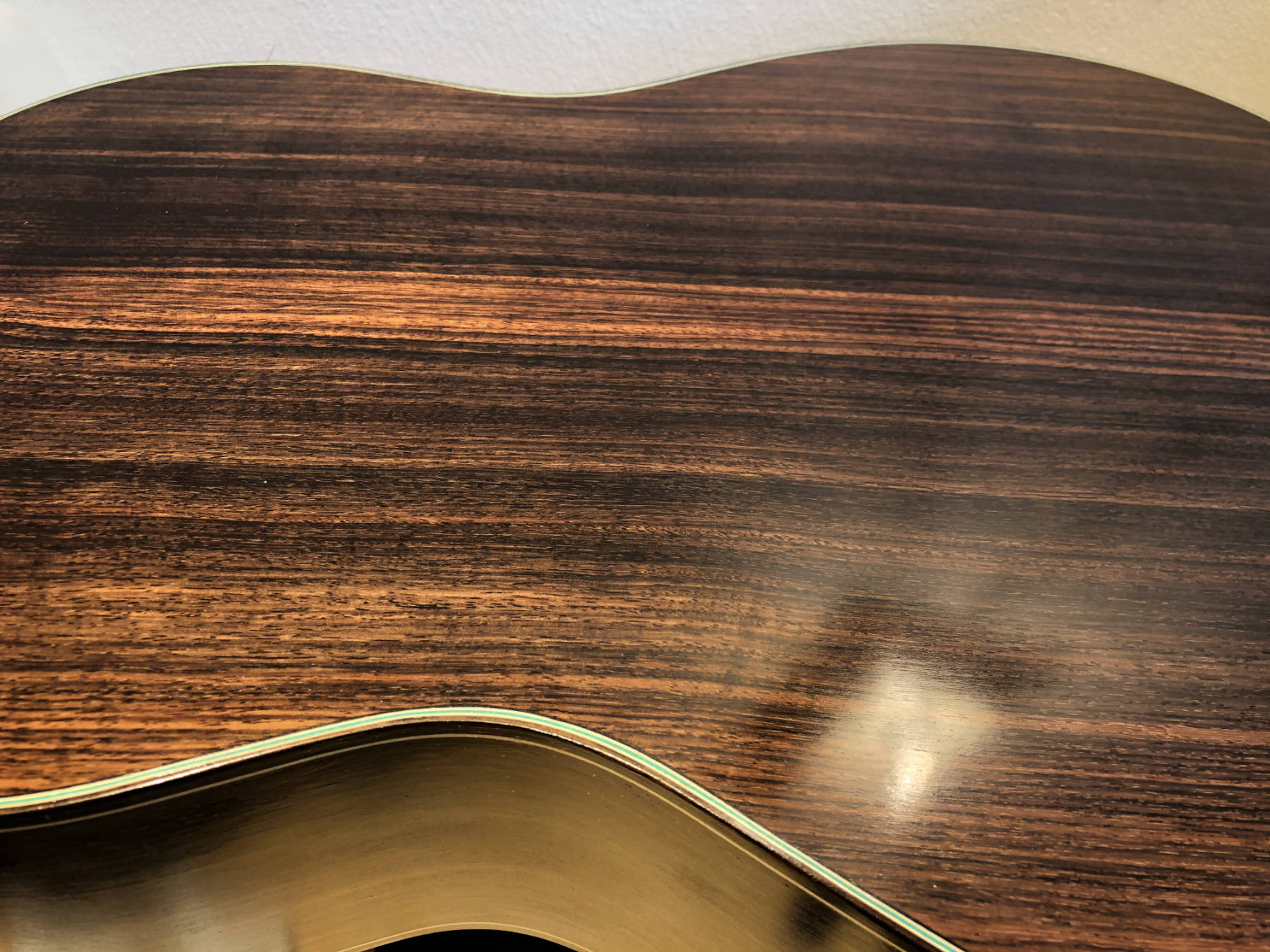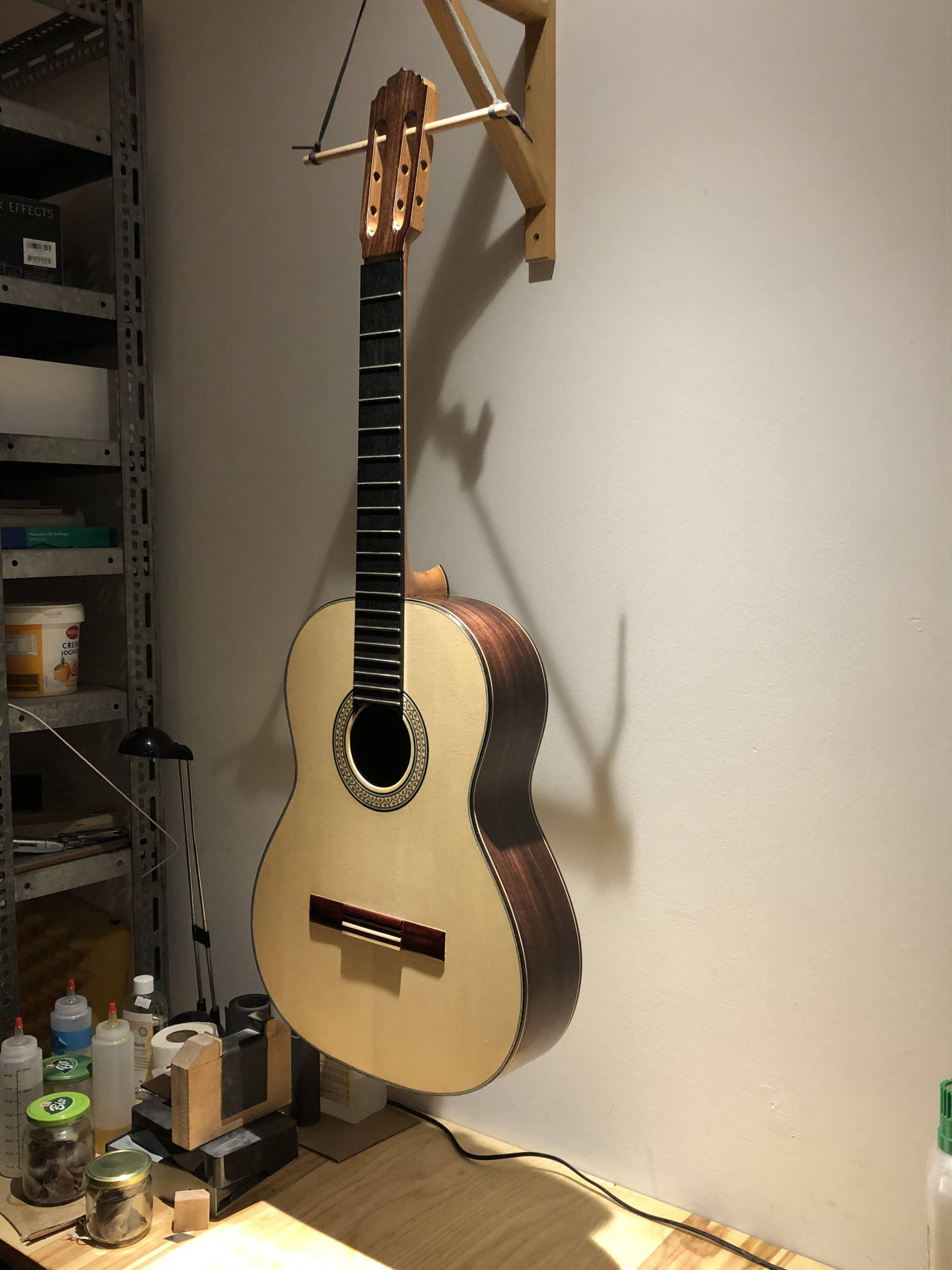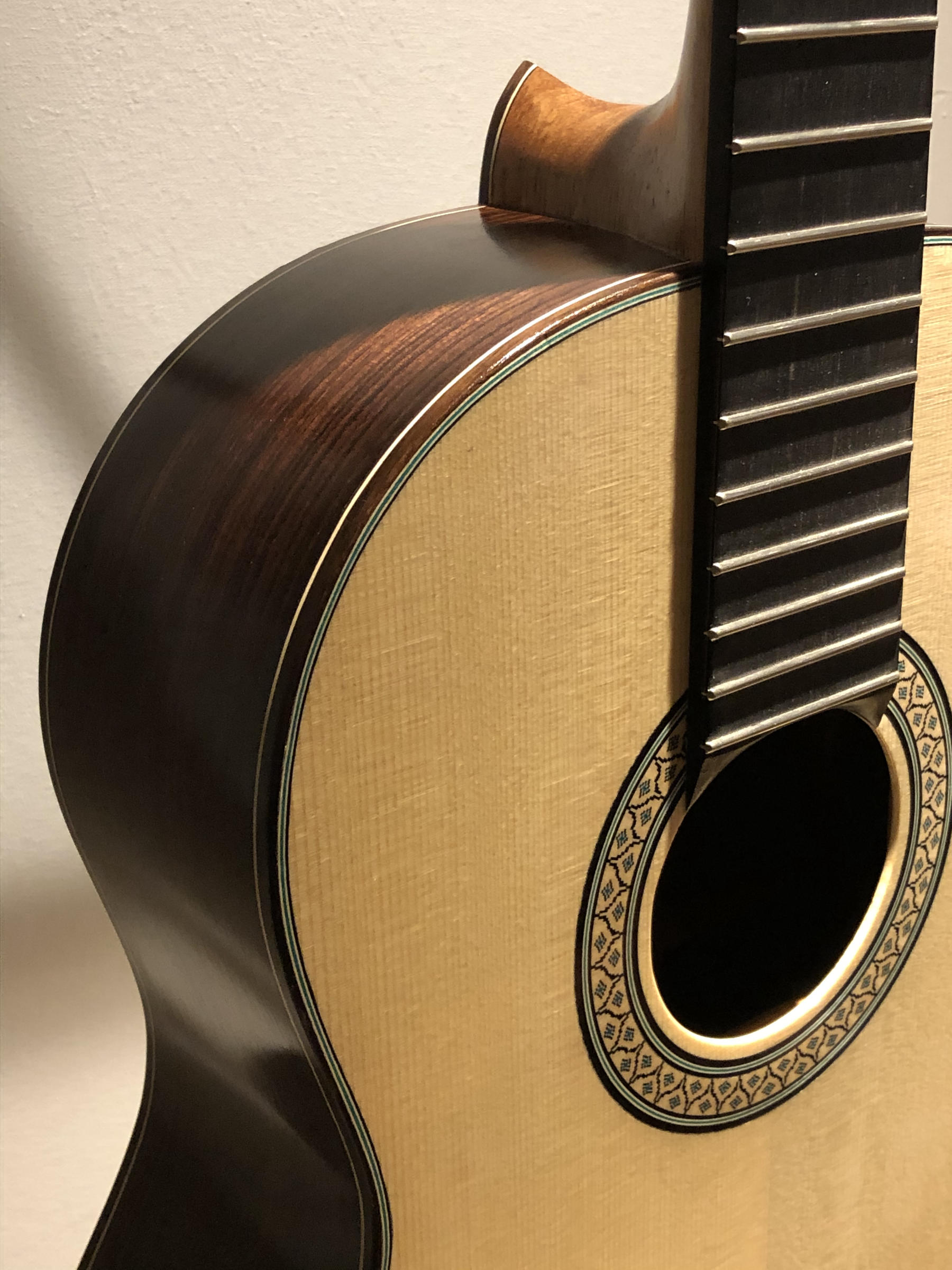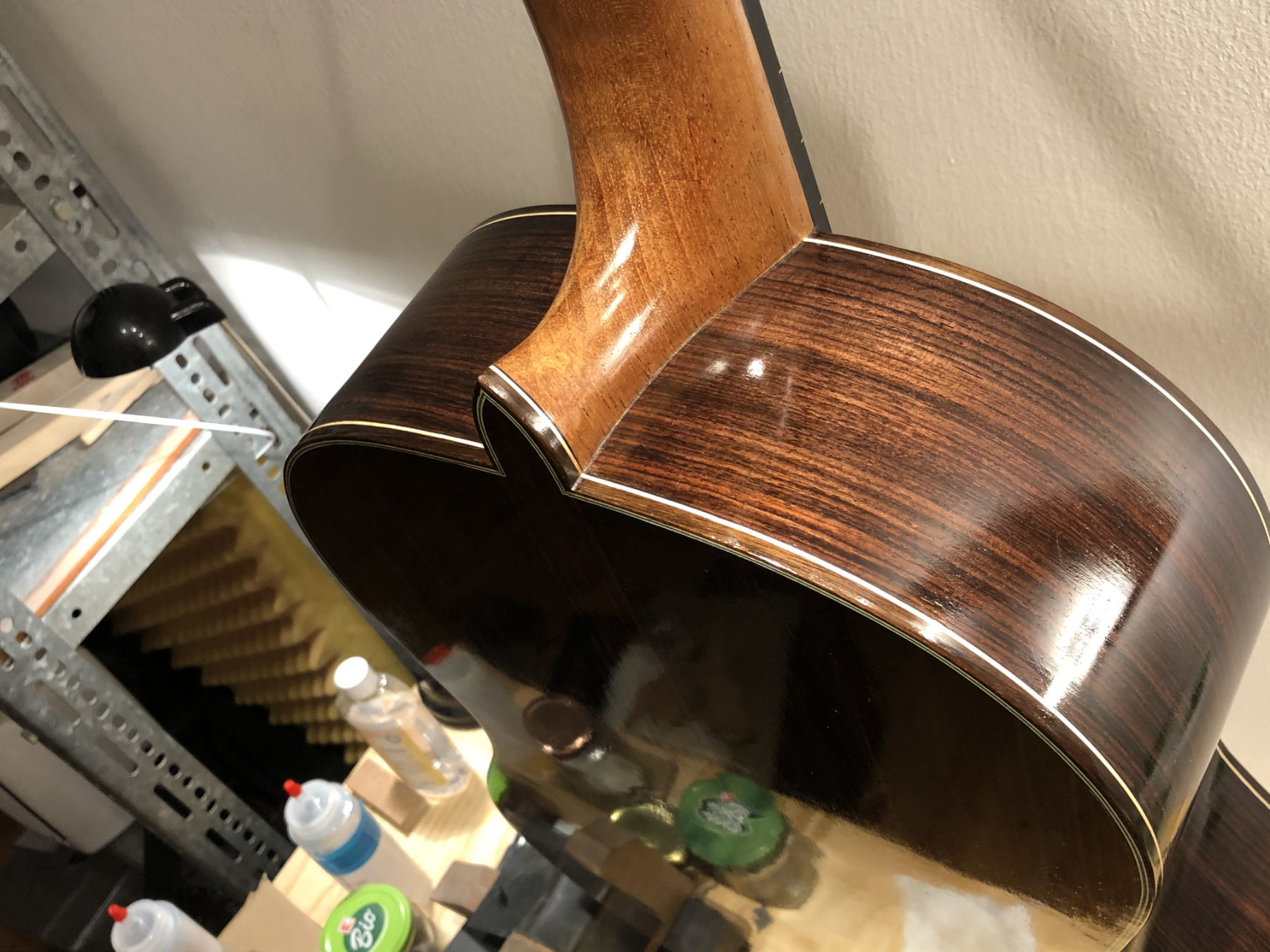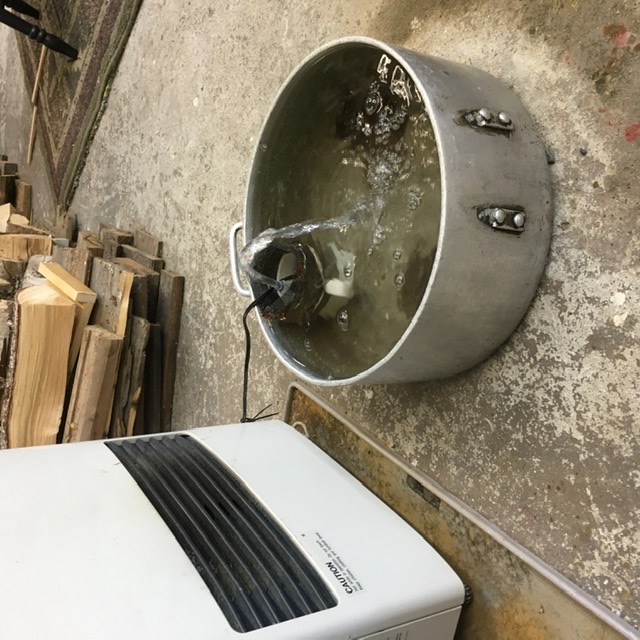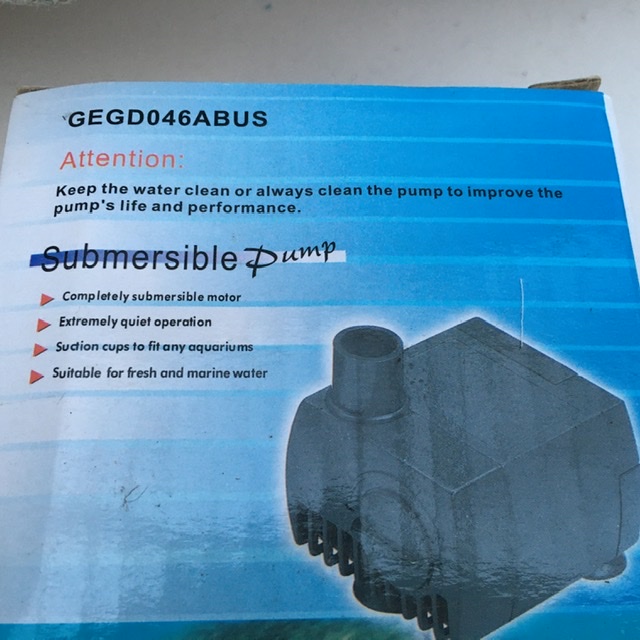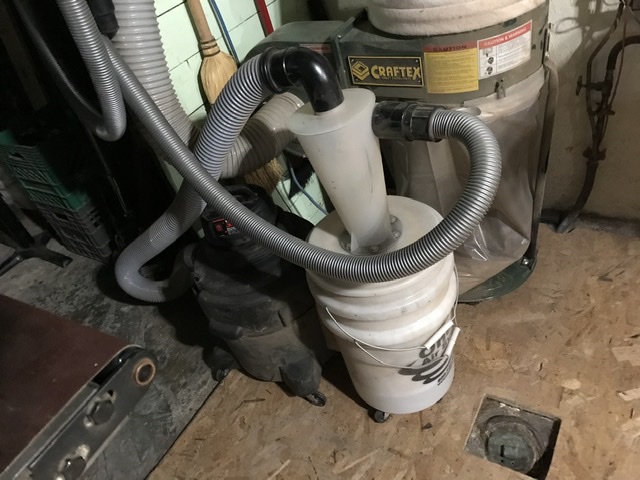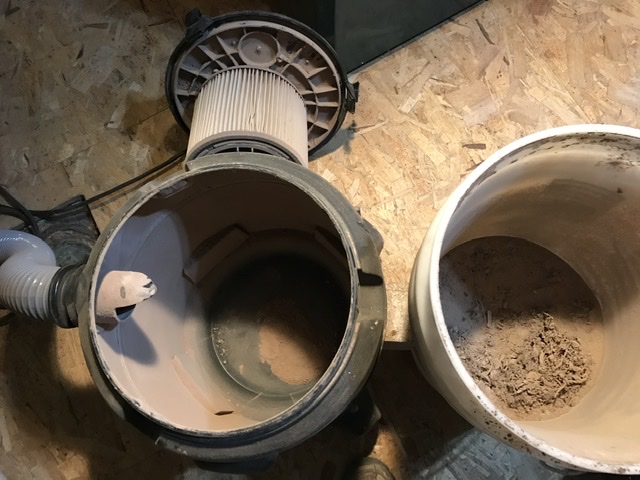|
RobF -> RE: Ebony dust (Mar. 18 2021 16:37:32)
|
Hi Mango,
I think you’re doing great work! If that’s your second guitar you should be very proud.
Pore filling is my least favorite job and whenever I hear someone say they get it all done perfectly in four hours or the like, man, do I ever get jealous, because I’ve never been able to pull that one off.
What I can see in the pictures is the pores aren’t filled. I suspect one reason is because there’s way too much shellac laid down. The dark spots are quite likely oil darkened pumice patches. These can be sanded out or removed by attacking the area with an alcohol soaked fad. I have to stress here, and this is important, pumice is an abrasive. Any area you clean up by rubbing aggressively is being sanded and will divot. So probably better to sand it out using a block, but you’ll have to sand the whole back, just sanding the dark spots will end up with an uneven surface. It sounds like starting over, but it isn’t, really.
I’ve started using a hard felt pad for pore filling. I started doing this because a fad can act like sanding by using your fingers over paper, while the pad acts like a sanding block and is less inclined to divot. Using a felt pad is also muy tradicional, if you read old furniture making tomes.
Pumice should be cleared with alcohol only, then applied. At the early stages, even if it’s being applied over an existing shellac finish, the clearing should be done with alcohol. I will use oil to clear, but only if I think pumice is needed during the later stages of polishing, then I don’t use alcohol.
But you’re not there yet. I think you should give a light sanding just until you reached bare wood, give it a couple of wash coats of thinned shellac, then pore fill with alcohol and pumice. Rub with the grain, not against. That last point is counter-intuitive, but my experience has shown it does seem to work better.
As far as letting the shellac pore fill, I’ve done this and it works. Six months later the shellac will shrink and the pores will again be exposed. But this is not necessarily a bad thing as the pores will have a protective layer of shellac on them, it’s not unprotected wood. It can also be very attractive and shouldn’t be thought of as an error or faux pas. But for the glassy smooth finish, the better the pore filling at the beginning of the job, the easier the rest of the job will go.
This is a complicated subject and there are many opinions on the right and wrong ways to do things. What might work well for one person is disasterous for another, so hopefully others will weigh in. I’ve been polishing for quite some time now and I do achieve professional results, but I’m constantly revising my methods, because when it comes to pore filling....aarrrrrrghhhh!
Best,
|
|
|
|
